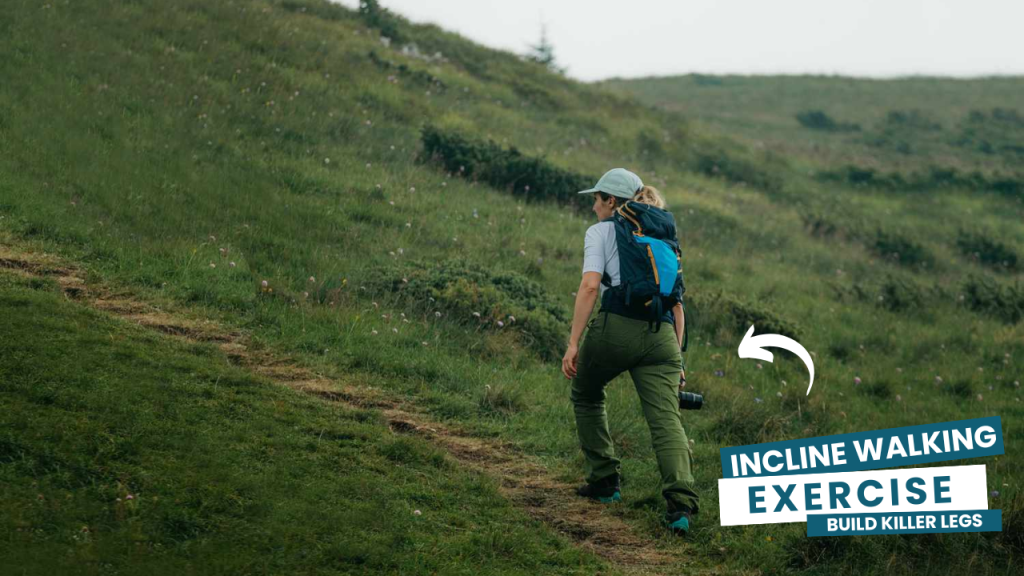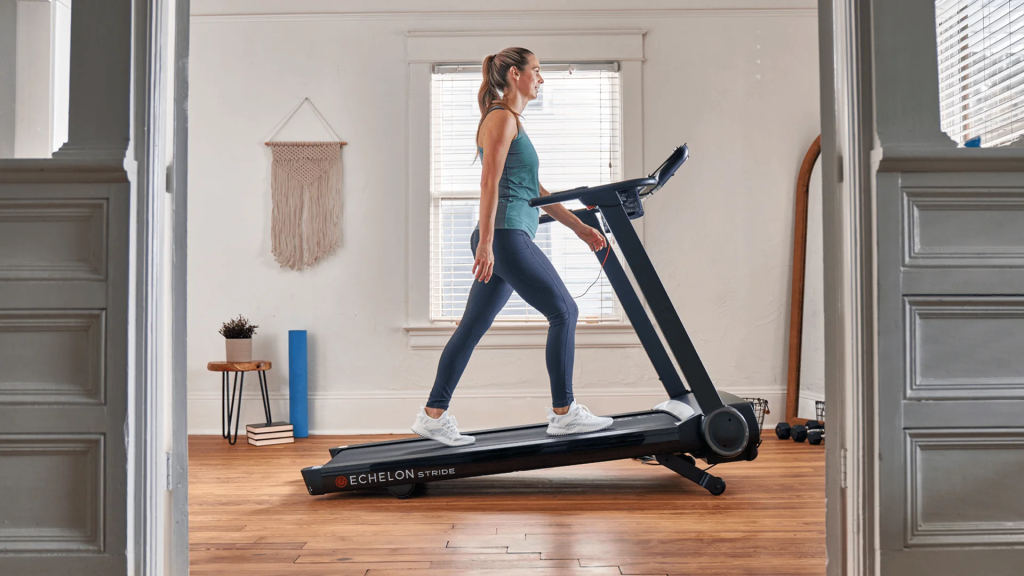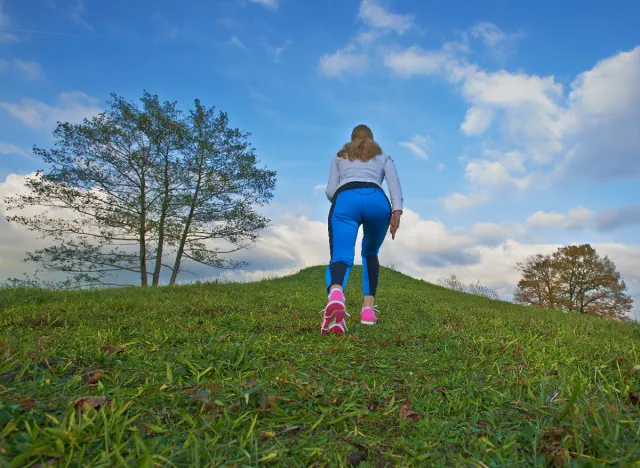Have you ever dreamed of sculpted, powerful legs — but without spending endless hours squatting or deadlifting heavy weights at the gym?
Here’s the truth: you don’t have to. Incline walking, a simple yet highly effective exercise, can build strength, and endurance, and shape your legs beautifully — no barbell required.
Let’s explore how a basic treadmill incline or a hilly trail could completely transform your lower body, and why you might want to start today.

What Is Incline Walking?
Incline walking is exactly what it sounds like: walking uphill, either on a treadmill with the incline feature turned on, or outdoors on a hill, mountain path, or elevated terrain.
It’s a low-impact cardiovascular workout — but when done strategically, it doubles as a leg-sculpting powerhouse.
Unlike flat walking, incline walking forces your muscles to work harder against gravity. It’s a functional movement — something your body was naturally designed to do — making it safer and more sustainable than heavy lifting for many people.
What Happens After 30 Days of Incline Walking?
| Change | Impact on Your Body |
|---|---|
| Stronger Leg Muscles | Noticeable toning and firmness in your glutes, quads, hamstrings, and calves. |
| Increased Endurance | Improved stamina during daily activities and longer workouts without fatigue. |
| Better Posture | Stronger core engagement helps you stand taller and walk more upright. |
| Fat Loss | Enhanced calorie burn can lead to visible fat reduction, especially around the legs and waist. |
| Boosted Metabolism | Daily incline walking keeps your metabolism elevated, helping with ongoing fat burning. |
| Improved Heart Health | Stronger cardiovascular system, leading to better blood circulation and lower resting heart rate. |
| Joint-Friendly Strength Gains | Build leg strength without the joint stress that comes from heavy weightlifting or running. |
| Enhanced Mood & Energy Levels | Regular uphill walks release endorphins, reducing stress and boosting overall mood. |
Muscles Worked During Incline Walking
When you walk uphill, here’s what happens beneath the surface:
- Glutes: You engage your glutes intensely to push your body upward.
- Hamstrings: These back-of-the-thigh muscles fire up to stabilize and lift each step.
- Quadriceps: Your quads (front of the thighs) take a major role in pushing the knees upward.
- Calves: Constantly engaged to stabilize and propel you.
- Core muscles: Incline walking demands a strong core to maintain balance and good posture.
Interesting Fact: Studies show that walking on a 15% incline activates the glutes up to 635% more than walking on flat ground!
Benefits of Incline Walking (Beyond Just Toned Legs)
While killer legs might be your primary goal, incline walking delivers full-body benefits:
- Boosts Cardiovascular Health: Your heart works harder at an incline, strengthening your cardiovascular system.
- Improves Posture: Uphill walking encourages upright posture and core engagement.
- Burns More Calories: You can burn twice as many calories compared to flat walking.
- Enhances Endurance: It’s excellent for athletes looking to improve stamina without high-impact stress.
- Reduces Joint Stress: Compared to running, walking — even on an incline — is much gentler on knees, hips, and ankles.
How to Perform Incline Walking for Best Results
You don’t need fancy equipment. Follow these simple steps:
On a Treadmill:

- Start with a Warm-Up: Walk for 5 minutes at 0% incline.
- Gradually Increase Incline: Aim for a 10-15% incline over the course of your workout.
- Maintain a Brisk Pace: Walk briskly, but don’t run.
- Keep Good Posture: Chest up, shoulders back, eyes forward — avoid leaning heavily on the handles.
Outdoors:

- Find a Hill or Trail: Natural inclines can be more challenging and interesting.
- Pace Yourself: Uphill walking can be surprisingly tiring; start slow and steady.
- Mind Your Form: Small, quick steps work better than long strides uphill.
Ideal Routine:
- Beginner: 20 minutes, 2–3 times per week
- Intermediate/Advanced: 30–45 minutes, 3–5 times per week
Myths About Incline Walking — Busted!
Myth 1: “You must run to build strong legs.”
Truth: Walking uphill is enough to create strength gains similar to weighted exercises.
Myth 2: “Incline walking doesn’t build muscle, it only burns fat.”
Truth: While it is amazing for fat loss, incline walking also strengthens and tones your muscles because of the continuous resistance against gravity.
Myth 3: “It’s only for beginners.”
Truth: Professional athletes, especially cyclists and runners, use incline walking for cross-training and injury recovery.
Pro Tip: Make It Progressive
If you want serious results, apply the principle of progressive overload, just like with lifting weights.
That means gradually increasing either:
- Incline level
- Duration of your session
- Speed of your walk
Example: If you started at a 10% incline for 20 minutes, work up to a 15% incline for 30 minutes over the next few weeks.
“Did You Know?” Moments About Incline Walking
- Incline walking can help prevent osteoporosis. The slight resistance from uphill walking strengthens your bones, making them more resilient over time.
- It mimics ancient human movement. Early humans evolved to walk long distances over varied terrain — your body is literally built for incline walking!
- You burn about 50% more calories walking at a 12% incline compared to flat walking at the same speed.
Final Thoughts: Strong Legs Are Built One Step at a Time
Incline walking isn’t just a workout; it’s a sustainable, life-enhancing practice.
Whether you want toned legs, improved endurance, better heart health, or just a refreshing break from traditional gym routines — incline walking delivers powerful, lasting results without the need for weights.
No heavy squats. No brutal lunges. Just you, the hill, and unstoppable progress.
Ready to lace up and build those killer legs naturally?
The incline is calling.
Frequently Asked Questions (FAQs)
Is incline walking better than running for building leg muscles?
Yes. While running focuses more on cardiovascular endurance, incline walking engages and strengthens major leg muscles (glutes, hamstrings, quads) without the heavy impact on your joints that running often causes.
How steep should the incline be to see results?
Starting with a 10%–12% incline is ideal for beginners. As you get stronger, aiming for 15% or higher can maximize muscle engagement and fat burn without overwhelming your body.
Can incline walking replace leg workouts with weights?
For many people, absolutely. Incline walking provides resistance through gravity, offering enough stimulus to tone and strengthen legs, especially when combined with progressive overload (increasing incline, time, or pace over time).
How long should I walk on an incline to build muscle?
A good target is 30–45 minutes per session, 3–5 times a week. Consistency is key. Even shorter, focused incline walks can deliver solid results when done regularly.
Will incline walking make my legs bulky?
No. Incline walking tends to lean and tone your legs rather than bulk them up. It sculpts the muscles while burning fat, leading to a defined, athletic look rather than a bulky one.
Is treadmill incline walking as effective as outdoor hill walking?
Both are effective. Treadmills offer controlled, consistent inclines, making it easier to track progress. Outdoor hills add variety and challenge, often requiring more balance and core stability due to uneven surfaces.
Should I hold onto the treadmill handles while incline walking?
Ideally, no. Holding onto the handles can reduce the workout’s effectiveness by taking the load off your muscles. Instead, walk upright, swing your arms naturally, and engage your core for better results.
What’s the best speed for incline walking?
Aim for a moderate, brisk pace — typically between 2.5 to 4 mph depending on your fitness level. You should feel challenged but still be able to hold a short conversation.
Can beginners start incline walking right away?
Definitely! Beginners can start at a lower incline (like 5%–8%) and shorter duration (15–20 minutes), then gradually build up over a few weeks as their strength and endurance improve.






Good